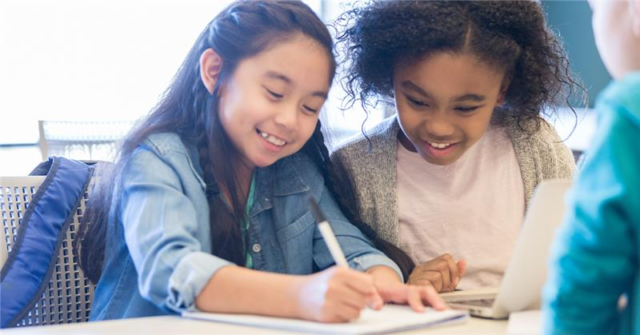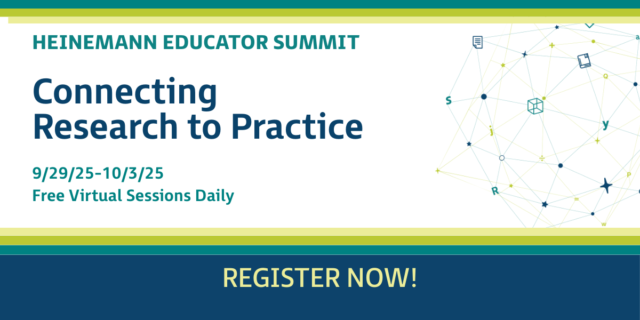
I first realized my senior Leticia* was battling much more than the Blahs when a student sent me a gentle email a few weeks before Thanksgiving break. “One of our group members is giving off a vibe that throws the whole group off. She won’t talk. She doesn’t share her work or give feedback. Just thought that I should let you know.” (*Details have been altered to protect the student’s identity.)
Let me explain that I knew there was a problem. She hadn’t turned in a weekly draft in over a month, and when I sat down with her for a writing conference during class, I could rarely pull a word or two from her. She was in a quiet but serious group, three of whom had requested to be in the same writing response group, introverted friends who all battled their own Blahs. But it worked—they got each other and were able to do some great writing together.
Leticia hadn’t requested anyone in particular. But this group would be kind to her, I knew.
Here’s the rub: Leticia behaved herself. Even more so, she was always the first to class, and since the class was first period, she went quietly to work taking down all the chairs that had been put on the tables the night before. Leticia performed this service for the class daily, as I kept up a one-sided conversation with her about books and the news, or, more often, scrambled for last-minute coffee or copies.
Leticia didn’t make trouble for me, but she was deeply troubled.
She sat quietly. She seemed to pay attention during mini-lessons. There were twenty-six other seniors in the class, and I allowed myself to be diverted by those who wanted my help and attention. I know this is natural, but I admit—I feel so sad and ashamed that this is true. Leticia needed me to intervene much sooner than I did.
Finally, I gave Leticia a pass and an order to come work with me on an important writing piece during my planning period, when she was also free, hoping she might talk if she didn’t have an audience.
Obediently, she came. We tried looking at the assignment, reviewing the directions and mentor text, but it was the same thing: silence, or a one- or two-word answer or shrug. Three sentences—good sentences—hunkered unbudging on an otherwise blank screen. Her writer’s notebook was empty.
Sitting at a table in my empty classroom, I closed the lid of the laptop.
Luckily for me, my school district has invested in professional development around trauma-informed teaching practices. We’ve learned not to ask students: What’s wrong with you? Instead, we ask: What happened to you? What’s happening to you?
This shift in wording is magical.
“Leticia,” I said, “let’s forget the writing. What’s happened? Can you tell me what’s happening?”
Tears. Just a few, as if they, like her words, were lodged in her throat.
Earlier in my career, I would have panicked. But I’ve learned to trust tears. They are often the turning point.
I grabbed tissues, one for her, one for me, and sat with her.
A few minutes later, she spoke.
“It’s like someone pressed the mute button. Now I can’t unmute myself. I’m lost.”
Jesus, I thought. I nodded, waiting for more, leaning forward.
And yes, I was afraid of what she might say next. Mutism is often triggered by trauma, and all teachers are mandated reporters. Writing teachers, I would guess, file the bulk of reports to Child Protective Services at the secondary level.
Another minute later, her brow furrowed, betraying the effort every sentence demanded of her.
“I don’t feel like I have anything worth saying that people would want to read. That’s why I can’t write, can’t give feedback to my group. Who am I to write? To give feedback?”
I leaned forward, looking her in the eyes. “Leticia, you’re a human being on this planet trying to navigate life. You’re a reader,” I responded. “You’re a writer. You are part of this class. Those are all the qualifications you need.”
Over the next five minutes, Leticia shared that her two best friends—her only true friends at this school—had moved away over the summer. Her sadness, isolation, and loneliness wrapped her in a fog that made every day a struggle.
“Pack up,” I ordered. “We’re taking a little field trip.”
On the short walk between my classroom and the library, down the airy, sunlit, blue-hued hallway, draped with dozens of colorful flags representing all the countries from which the students of Santa Clara High School hail, I shared with Leticia that there really is a condition called mutism, where a person, for a variety of reasons, stops speaking. And many of my favorite authors have written about it, even experienced it themselves: Maya Angelou, Laurie Halse Anderson, Alice Walker.
I also shared that if my gig as an English teacher falls through, I’m going to become a bibliotherapist, because I believe in my bones that there is always a book that will heal us. Reading, along with writing, is my favorite therapy.
I pulled Speak, I Know Why the Caged Bird Sings, The Color Purple, The Perks of Being a Wallflower off the shelves. She checked out two to take home and give a try. “Books have always been my best friends,” I admitted. “And writing can be too. And reading and writing are yours as well, Leticia.”
For a week, I thought this intervention had amounted to nothing. But her mother and I had begun emailing, talking on the phone, keeping in regular touch. Our school’s counseling office and wellness center were on the scene, providing services. I knew Leticia was still staring into the Abyss, but there were many hands holding hers. She wasn’t alone, and neither was I. Now, I was part of a coordinated effort.
Things didn’t turn around quickly, but they did start to shift course. With a lot of help and encouragement from her amazing family, Leticia was able to complete the vast majority of her missing writing pieces over Thanksgiving break, and they were good—articulate, brave, honest, at times heartbreaking.
Almost a month after those first quiet tears as we sat in our empty classroom, Leticia and I sat together again, this time during writing workshop, surrounded by small groups planning their symposium presentations, part of their final project.
Leticia had brought in a new piece of writing she was excited to show me. As is my habit, I pulled it up on my laptop and started reading it aloud to her, but she kept interrupting me with funny asides, laughing about the GIFs she had embedded into the document to illustrate a few points she was making.
Who knew? Underneath all that quiet, all that pain, all that isolation, was a funny, witty, clever, brilliant young person. I’m so glad I got to meet her.
I’ve been thinking about how I can try to avoid allowing another student to slip, unnoticed, into the Abyss. One strategy I plan to employ I learned from my friend and colleague Anna Osborn, a reading intervention specialist and Heinemann Fellow. Kidwatching, a concept developed by Yetta Goodman and Gretchen Owocki and explained thoroughly in their 2002 book by the same name, is a well-known literacy practice used by elementary teachers, but as a secondary teacher, I had never heard of it. And kidwatching is just what it sounds like.
Anna takes a few minutes to observe students during independent reading, jotting down notes to record what she sees. Clearly, this could work for anything—independent reading behavior, independent writing during workshop, engagement, but also spirit and demeanor. With Anna’s help, I hope to design a trauma-informed kidwatching protocol. Later, I’ll let you know how it goes.
Looking back, I can’t help but draw the conclusion that my own occasional Blahs contributed to my delayed intervention with Leticia. All my energy went into just making it through the day. I could not see my students’ Blahs for my own. Clearly, the stakes of battling the Blahs are higher than even our personal longevity in the profession.
I’m very good at chewing on my failures like a piece of gristle, but that habit serves no useful purpose. Instead, I vow to take better care of myself—October especially, when my Blahs seem to arrive like a grumpy relative, overstaying his welcome. I hope that by having a plan in place, and awareness that this happens, and that it is natural, I can be more prepared, more present, more other-focused, especially in my classroom.
And so, my Blah game plan is this: more sleep, more exercise, more good food, more fun, more reading, more time with friends and family. Less screen time, less Netflix, less junk food, less CouldHaveBeens and ShouldHaveBeens. If you, like me, suffer from bouts of the Blahs, I encourage you to develop your own plan too. To take care of our students, to do our part in ensuring Leticia and other young people like her don’t fall into the Abyss, we must first stay clear of it ourselves.
And it’s worth it to make the effort—just looking at Leticia now shows me this is true. I finally suspect that Leticia has claimed writing as her friend and companion, when she came in not only during lunch to write but again later that afternoon during seventh period. She wanted feedback on another piece she wrote over break—her task was to explain a complex natural phenomenon using a relatable, small-scale activity. She devised a brilliant description—a self-made tsunami caused by an inflatable kiddie pool popping suddenly. Her deadpan reading of this tiny disaster had us both laughing.
Amazing: In such a short time, Leticia learned something I forgot I was teaching—that writing can be joyful, can connect us to ourselves and to others.
The bell rang, and she packed up and walked out of class, her grin so large I could see the pearly pink of her gums. It was impossible not to grin back at her, at this brave young woman who has been my teacher, even as my eyes watered and my throat constricted.
Yes, the work will heal us.


